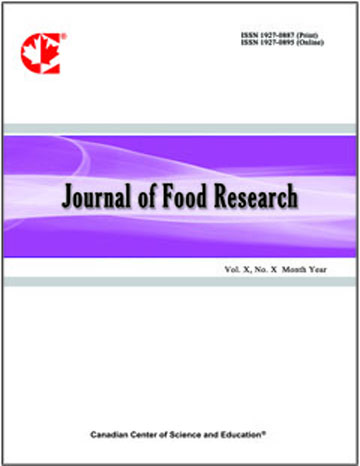Production, Marketing and Biochemical Characterization of Gnonmi (Millet Fritter) Consumed in Korhogo in Cote d’Ivoire
- Bomo Justine ASSANVO
- Flora Gisele Abboh NGORAN
- Kouame Riviere ASSANDI
- Mamidou Witabouna KONE
Abstract
Gnonmi is a widely consumed food in Cote d’Ivoire and originates from the Northern part. Originally, it is mainly made from millet, but a variety of cereals are used for its cooking. The aim of this study was to generate more knowledge on the methods of preparation of gnonmi and marketing as well as its nutritional characteristics. A cluster and snowball survey were carried out in different neighborhoods of the city of Korhogo. Then, some samples of gnonmi were subjected to biochemical analyses. Based on the results obtained, 19 sellers surveyed were between 18 and 60 years old and 52% were not in school. At the production level, the cereals used were millet, raw and cooked rice and corn. These cereals were used in varying proportions. Gnonmi production is an income-generating activity for the women of Korhogo and a source of nutrient intake for the population. Physicochemical analysis showed that Gnonmi marketed in the city of Korhogo had an average pH of 4.13 for a titratable acidity of 0.42 meq/100g, a dry matter content of 65.8% and a water content of 34.2%. On average, the dietary fiber, ash, carbohydrate, protein and lipid levels were respectively 30.44%; 0.51%; 39.62%; 5.22% and 20.42% for an energy value of 363 Kcal/100g. Knowledge of biochemical parameters facilitates the prospects for improving and formulating foods richer in nutrients for the well-being of consumers
- Full Text:
 PDF
PDF
- DOI:10.5539/jfr.v14n2p112
Index
- AGRICOLA
- BASE (Bielefeld Academic Search Engine)
- CAB Abstracts
- CAB Direct(CABI)
- CAS (American Chemical Society)
- CNKI Scholar
- Electronic Journals Library
- EuroPub Database
- Excellence in Research for Australia (ERA)
- Google Scholar
- JournalTOCs
- Mendeley
- Mir@bel
- Open policy finder
- Scilit
- Ulrich's
- WorldCat
Contact
- Bella DongEditorial Assistant
- jfr@ccsenet.org
